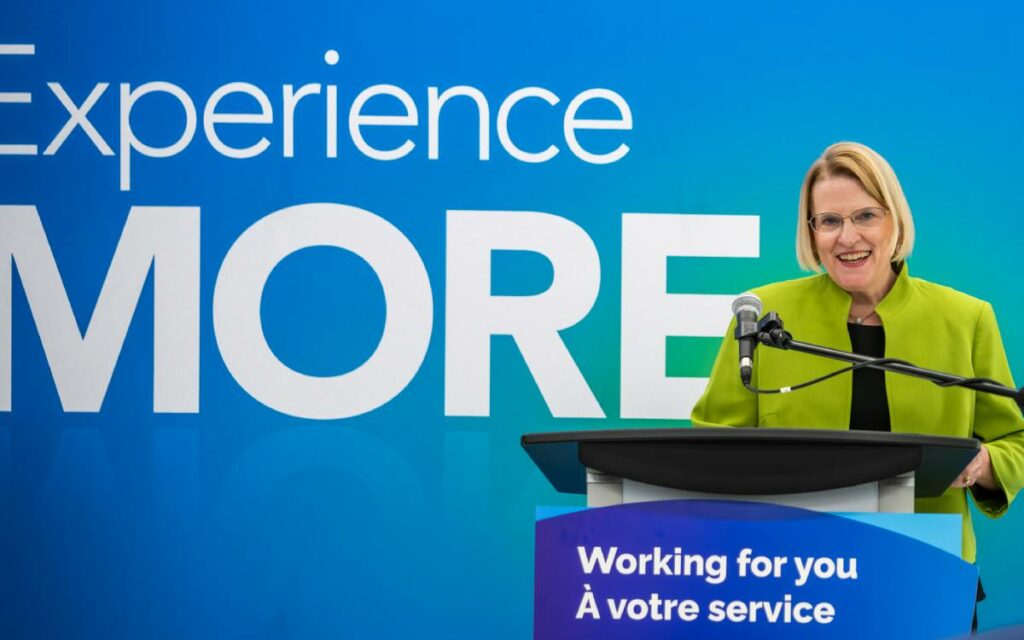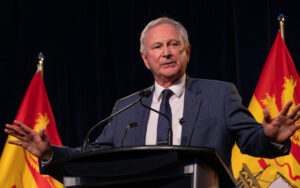
More money – the proposed solution of choice for virtually all provincial governments past and present – simply won’t get the job done. Pictured is Ontario’s Minister of Health Sylvia Jones. Photo credit: Twitter/Sylvia Jones
Here’s a truth most politicians will never admit: throwing money at Ontario’s health-care system won’t solve its fundamental problems.
Government after government has arrived at Queen’s Park and declared money the answer to fixing Ontario’s beleaguered health-care system.
The Ford government is no different.
When Ontario Premier Doug Ford landed in office, he inherited a health-care budget that was $61.3 billion. Earlier this year, when the Ford government presented its fourth budget, Ontario’s health-care system received a record $81 billion. That’s $5,559 per person, which is hundreds of dollars more person than other large provinces like British Columbia and Alberta.
In a five-year period, the Ford government has grown the province’s health-care budget by nearly one-third, more than double the rate of inflation plus population growth.
Yet official Opposition Leader Marit Stiles is travelling around the province claiming Ford is cutting the health-care budget.
“I am really concerned about the state of public health care in Ontario right now,” Stiles said. “Ford’s deep cuts are failing Ontario.”
If increasing the health-care budget by one-third in just five years represents “cuts,” taxpayers can only imagine what Stiles thinks an increase in health-care spending should look like.
Sadly, this is the state of health-care politics in Ontario. Every party wants to throw more and more money at the system without pursing fundamental change.
But has more government spending improved Ontario’s system?
The short answer is no.
Thirty years ago, the spend-happy Bob Rae government allocated $17.5 billion to the province’s health-care budget. That worked out to $1,667 per person. If Ontario was still spending at Rae government levels after accounting for inflation and population growth, this year’s health-care budget would be $2,984 per person.
We’re spending over $2,500 per person more than we did in 1993, after adjusting for inflation. Yet outcomes are getting worse.
In 1993, the typical Ontarian waited 9.2 weeks to see their family doctor and then get treated by a specialist. Last year, the average wait was 20.3 weeks.
And the system is failing in key areas.
Ontario seniors wait an average of five months to get cataract surgery so they can see clearly.
Patients with hernias endure pain for an average of four months before finally being treated.
And although one-in-three Canadians are dealing with mental illness, the typical Ontarian has to wait a staggering 25 weeks to access proper care.
Clearly, throwing cash at our health-care system is far from the silver bullet proponents have made it out to be.
Politicians looking for answers should gaze beyond Canada’s borders.
Peer countries like New Zealand, Australia, the Netherlands and Germany all have universal health-care systems with better results while costing the same or less, according to a Commonwealth Fund report.
A key difference between Canada and those countries is the level of flexibility within the system. In our peer countries, patients can shop around for the doctor and insurance plan that’s right for them. Here in Canada, patients are stuck in long lines with limited flexibility.
The Netherlands has a clear record of better patient outcomes for a lower price. The Dutch system requires its citizens to purchase a basic level of insurance, funded both by tax dollars and individual premiums. This model empowers Dutch patients by allowing them to explore their options and choose the health-care provider they think will be best for them. Patient choice fosters competition and helps lower costs.
On almost every metric, the Commonwealth Fund report finds the Netherlands’ universal system outperforms Canadian health care.
It’s time to give Ontarians more options instead of higher taxes to fund a system that continues to fall short. Politicians should look to foster more competition, consider alternate delivery models and incorporate best practices from countries that are delivering more for less.

Jay Goldberg is the Ontario Director at the Canadian Taxpayers Federation. He previously served as a policy fellow at the Munk School of Public Policy and Global Affairs. Jay holds a Ph.D. in Political Science from the University of Toronto.




















